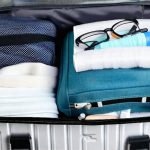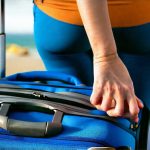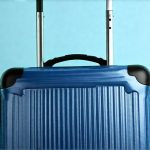Traveling is often associated with freedom, exploration, and creating lasting memories. However, for individuals managing urinary disorders – ranging from overactive bladder to incontinence or post-surgical concerns – the prospect of travel can induce significant anxiety. The fear of accidents, limited access to appropriate facilities, and uncertainty about managing symptoms away from a familiar routine are all valid concerns. Effective planning is therefore crucial not just for an enjoyable trip, but also for maintaining dignity and minimizing stress. This isn’t about restricting travel; it’s about empowering individuals to navigate their journeys with confidence and peace of mind.
This article aims to provide a comprehensive guide to crafting a travel plan specifically tailored for those living with urinary disorders. It will cover practical considerations, proactive steps, and resources that can help mitigate potential challenges and ensure a smoother, more comfortable experience. We’ll focus on preparation, during-travel strategies, and emergency preparedness, all designed to allow you to enjoy the wonders of exploration without being held back by worry or limitations. Remember, with thoughtful planning, travel remains accessible and fulfilling for everyone.
Pre-Trip Preparation: Laying the Groundwork
The foundation of a successful trip when managing urinary disorders lies in meticulous pre-trip preparation. This goes beyond simply packing essentials; it involves proactive communication with healthcare providers, researching destination facilities, and assembling a comprehensive kit tailored to your specific needs. Ignoring this stage can significantly increase anxiety and potentially disrupt your travel plans. A well-thought-out plan minimizes unexpected situations and empowers you to respond effectively if challenges arise.
Consider scheduling an appointment with your urologist or primary care physician several weeks before your departure date. Discuss your travel itinerary, including the mode of transportation, duration of the trip, and planned activities. This allows for adjustments to medication schedules, obtaining necessary prescriptions (with extra supply in case of loss), and receiving personalized advice based on your condition. It’s also a good time to discuss strategies for managing potential flare-ups while traveling and what to do if you experience complications.
Finally, research the accessibility of restrooms at your destination. This is particularly important for individuals with urgency or frequency issues. Utilize online resources like restroom finder apps (mentioned later) or check the websites of airports, train stations, tourist attractions, and hotels. Understanding the availability of facilities allows you to plan routes and activities strategically, reducing anxiety and ensuring convenient access when needed. Don’t hesitate to contact establishments directly to inquire about accessibility features such as wheelchair-accessible restrooms or proximity to facilities.
Assembling Your Travel Kit: Essential Items
A dedicated travel kit is invaluable for managing urinary disorders on the go. This isn’t just about bringing medication; it’s about anticipating potential needs and having solutions readily available. The contents of your kit will vary depending on your specific condition, but here’s a comprehensive checklist to consider:
- Medications: Bring more than enough for the duration of your trip, plus extra in case of delays or loss. Keep medications in their original packaging with clear labels and a copy of your prescription.
- Absorbent products: Pads, liners, or incontinence underwear – choose options appropriate for your level of need and pack plenty. Consider different sizes and absorbency levels for varying situations.
- Wipes/Cleansing supplies: Hypoallergenic wipes are helpful for maintaining hygiene after accidents or during restroom visits with questionable cleanliness.
- Change of clothes: Pack at least one complete change of underwear and clothing, including trousers/pants, in a waterproof bag. This provides reassurance and minimizes embarrassment in case of an accident.
- Plastic bags: For disposing of used absorbent products discreetly and hygienically. Ziplock bags are ideal.
- Hand sanitizer: Essential for maintaining good hygiene when restroom facilities lack soap or running water.
- Travel-sized bladder diary: If you typically track your fluid intake and voiding habits, continue doing so during travel to monitor your condition and identify potential triggers.
- List of emergency contacts & medical information: Include your doctor’s name and phone number, a list of medications you’re taking, allergies, and any relevant medical history.
Remember to keep your travel kit easily accessible – in your carry-on luggage rather than checked baggage – to ensure you have immediate access to essential items during transit.
Navigating Transportation: Air, Rail & Road
Different modes of transportation present unique challenges for individuals with urinary disorders. Planning ahead can minimize stress and ensure a more comfortable journey.
Air travel often involves long periods without restroom access. When booking flights, consider choosing airlines that offer larger restrooms or allow pre-boarding for passengers who require extra time. Don’t hesitate to inform flight attendants about your condition – they may be able to accommodate your needs, such as reserving a seat near the restroom. Similarly, on rail journeys, check if accessible restrooms are available and request seating near them when booking. For road trips, plan frequent stops along the way, using apps or websites to locate rest areas with clean and accessible facilities.
Be prepared for delays. Unexpected disruptions can significantly impact your ability to manage your condition. Always have extra supplies on hand and be ready to adjust your plans if necessary. Consider bringing a portable urinal or commode if you anticipate limited access to restrooms, especially during long journeys.
Finally, remember to stay hydrated but mindful of fluid intake. While it’s important to avoid dehydration, excessive fluids can exacerbate urgency or frequency issues. Pace your fluid consumption throughout the journey and avoid diuretics like caffeine and alcohol.
Utilizing Technology & Resources: Apps & Websites
Technology offers a wealth of resources for travelers with urinary disorders. Several apps and websites are specifically designed to help locate accessible restrooms, plan routes with convenient stops, and provide valuable information about managing bladder health on the go.
- Restroom Finder Apps: Apps like “Flush” or “SitOrSquat” allow users to search for nearby restrooms based on location, accessibility features (wheelchair access, family restrooms), and user reviews.
- Accessible Travel Websites: Websites dedicated to accessible travel provide detailed information about the accessibility of destinations, hotels, and attractions, including restroom facilities.
- Bladder Health Organizations: Organizations like the Urology Care Foundation or the National Association for Continence offer valuable resources, educational materials, and support groups for individuals managing urinary disorders.
- Travel Planning Tools: Utilize travel planning websites to research airport layouts, train station maps, and hotel amenities before your trip.
These tools empower you to make informed decisions, plan effectively, and navigate your journey with greater confidence. Don’t underestimate the power of technology in alleviating anxiety and ensuring a smoother travel experience.
It’s important to remember that living with a urinary disorder shouldn’t limit your ability to explore the world. With careful planning, proactive preparation, and utilization of available resources, you can embark on fulfilling adventures and create lasting memories without compromising your comfort or dignity.





















